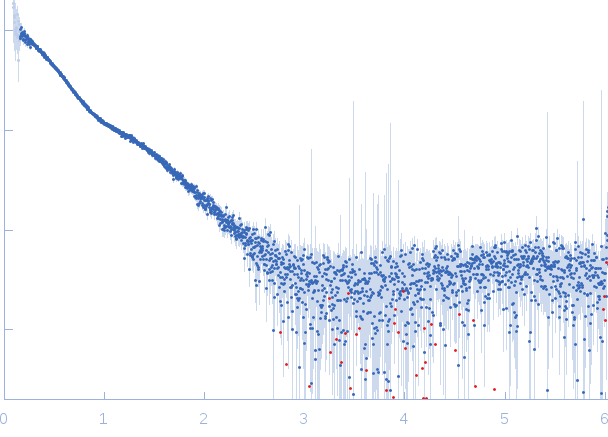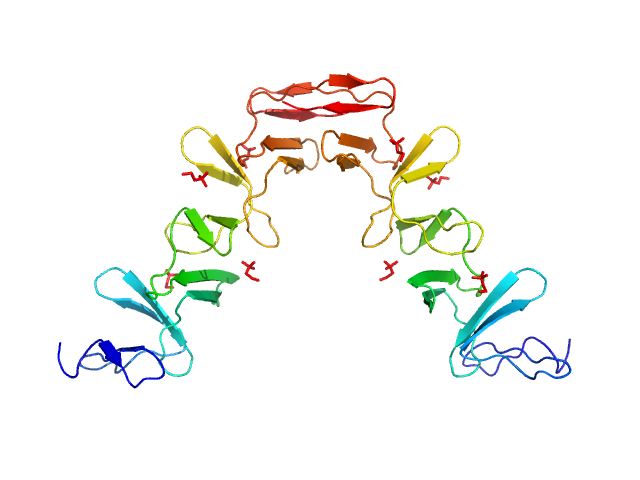|
Synchrotron SAXS
data from solutions of
Wild-type LytA choline-binding domain
in
20 mM Tris 150 mM NaCl 5 mM choline chloride 1 µM ZnCl2, pH 7.5
were collected
on the
EMBL X33 beam line
at the DORIS III, DESY storage ring
(Hamburg, Germany)
using a Pilatus 1M-W detector
at a sample-detector distance of 2.7 m and
at a wavelength of λ = 0.15 nm
(I(s) vs s, where s = 4πsinθ/λ, and 2θ is the scattering angle).
Solute concentrations ranging between 0.7 and 6.9 mg/ml were measured
at 10°C.
Eight successive
15 second frames were collected.
The data were normalized to the intensity of the transmitted beam and radially averaged; the scattering of the solvent-blank was subtracted.
The CBD of wt-LytA forms a dimer in solution, in line with results from the crystal structure.
|
|
 s, nm-1
s, nm-1
